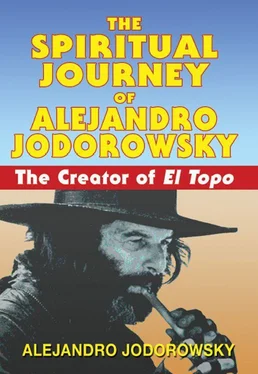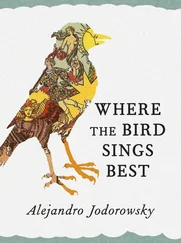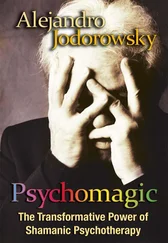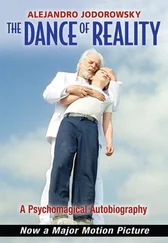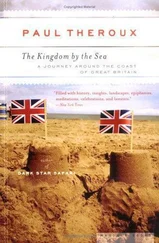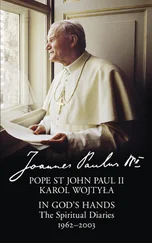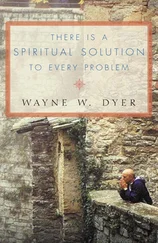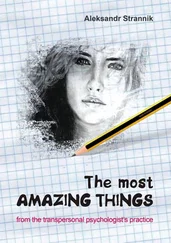*4. Also known as Hakuin Zenji (1686–1769 CE), he was born to a samurai family and was one of the masters who shaped the Rinzai school and systematized the koan way of teaching. In his childhood, he had been traumatized by a sermon on the torments of hell, causing him to question many things about his tradition, which led to his having to endure harsh treatment by his master. He was a man of great kindness, a gifted teacher, and a major scholar.
*5. Zhaoshu Congshen (778–897 CE), whose Japanese name is Joshu Jushin, was eighteen when he met his Chinese master, Naquan Puyan (748–855 CE), known in Japan as Nansen Fugan.
*6. Hau Hoo, The Sound of One Hand Clapping: 281 Zen Koans and Their Solutions, translated by Yoel Hoffmann (New York: Basic Books, 1975). Originally published as Gendai Sejizen Hyoron [A Critique of Current Pseudo-Zen] (Japan: n.p., 1916).
*7. [These passages do not constitute an accurate quotation of any logion of the Gospel of Thomas. Instead, they are a kind of montage of passages from that gospel, drawn from different logia and edited for theatrical purposes. — Trans .]
*8. Rinzai Gigen, whose Chinese name was Linji Yixuan, was born in an unknown year in Nanhua and died in 866 CE. As a child, he entered the monastery and taught there during the era of the widespread persecution of Buddhists (842–845 CE). Besides founding the Soto school, he founded one of the great Ch’an schools that bears his name (Linji, or Rinzai in Japanese). His school, which had a reputation of especially severe discipline, emphasized the transcendence of dualistic thought, and the use of koans in the search for an awakening that was believed to be sudden and unexpected.
*9. Hui-Neng, or Ejo in Japanese (638–713 CE), was the sixth patriarch in direct succession from Bodhidharma. Hui-Neng is considered to be the founder of Zen. (See the note in chapter 10 defining the Bodhidharma.)
*10. Marpa Lotsava (1012–1097 CE) was a Tibetan master and translator who made several voyages to India, studying and transmitting the Dharma (the Buddha’s teaching). He is famous as the master of Milarepa. The end of his life was marked by the death of his son, Darme Dode.
*11. Sutras are sacred texts in Indian traditions. In Buddhism, they refer to accounts of talks by the Buddha. The Diamond Sutra (Vajracchedika Prajñaparamitrasutra) was translated into Chinese around 40 °CE and into Tibetan sometime between 800 and 90 °CE. It speaks of the nonexistence of a separate self in Boddhisattvas (destined to become Buddhas only through fulfilling a vow to help as long as there are beings who suffer), spiritual evolution, and other themes.
*12. Caoshan Benji (840–901 CE) was known as Sozan Honjaku in Japanese. A Chinese Ch’an master who studied Confucian teachings before he encountered Buddhism, along with his master Don-shan Liangqie (Tozan Ryokai), he founded the Caodong (Soto) school, which became very influential in Japan due to his disciple Yunju Daoyin (Ungo Doyo).
*13. Pinole is a type of grilled corn flour sweetened with sugar. It is difficult to swallow dry and requires abundant saliva.
†14. Deshan Xuanjian, or Tokusan Senkan in Japanese (782–867 CE), engaged in a deep study of the Diamond Sutra. He headed a monastery and had several famous disciples, including Xuefeng Yicun, or Seppo Gison in Japanese (822–908 CE), who founded a monastery on Mount Xuefeng, the name he adopted.
*15. The religious name of the Chinese official Zheng Ting, who lived during the Sui dynasty (589–618 CE) and the Tang dynasty (618–906 CE).
*16. [The haiku translations from the Japanese used here do not retain the 5-7-5 syllabic structure of the original poems. Nonetheless, they preserve the spirit of the originals. — Ed .]
*17. Like the Diamond Sutra, the Heart Sutra (Prajñaparamitahridayasutra) was translated from Sanskrit to Chinese around 40 °CE and into Tibetan sometime between 800 and 90 °CE. The famous mantra (a sequence of sacred syllables whose chanting strengthens, protects, and awakens) from this sutra is: Gate, gate, paragate, parasamgate, bodhi svaha. One widespread English translation is: “Gone, gone, gone beyond, gone beyond going beyond, awakening, so be it!”
*18. Yunmen Wenyen, or Ummon Bunen in Japanese (864–949 CE), founded the Zen school that bears his name. His responses, often consisting of a single word, are famous for their precision, penetration, and adaptability to different disciples.
*19. In Tantra, awakening happens through the union of male (linga/Shiva) and female (yoni/Shakti) energies. The classic Hindu representation of this is the figure of Shiva in sexual union with Shakti: both are seated face-to-face, and she has her legs wrapped around him. This image recurs in Buddhist deities represented with Tibetan tantric imagery.
*20. A collaborative work by Mumon Ekai (Wumenguan, “the doorless passage,” in Chinese). It is a collection of forty-eight koans plus a commentary and poem. Mumon Ekai’s collaborator was Wumen Huikai (1183–126 °CE), whose own master, Yuelin, gave him as an exercise the famous koan “Does a dog have Buddha nature?” The famous response—“Wu” (Mu in Japanese) — was given by the Chinese master Shaoshou Congshen (Joshu Jishin). Wumen meditated on this response for six years, when an experience of awakening led him to compose the repetitive quatrain that introduces this book.
*21. Xiangian Zhixian, or Kyogen Chikan in Japanese (died ca. 898 CE) appears in example 5 of the Mumonkan (Wumenguan). The story of his awakening is considered edifying and is often quoted.
*22. Jinquin Daofu, or Kyosei Kyosho Dofu (ca. 865–937 CE), a Ch’an master and disciple of Xuefeng Yicun.
*23. George Ivanovitch Gurdjieff, the famous esoteric philosopher of Russian nationality and Greek and Armenian ancestry. In 1922 he founded an experimental center in Fontainebleau, near Paris, devoted to the study of consciousness: the Institute for the Harmonious Development of Man. He also traveled and taught in New York and in Chicago. He spent most of the latter part of his life teaching in Paris, where he died in 1949.
*24. The enneagram is a diagram in the form of a kind of nine-pointed star. It is used as a model to describe cosmic and psychological laws of human consciousness, especially in the study of character and personal evolution. It may have originated in Persia. It is used by some Sufi schools and was used by Gurdjieff. Oscar Ichazo and Claudio Naranjo had a major influence on its current popularity.
*25. Little information is available about Dazu. According to Sinologist Paul Demiéville (in the book Poèmes chinois d’avant la mort also by Jean-Pierre Diény [Paris: l’Asiathèque, 1984]) he is quoted in the Songjing in 961 CE and must have lived during the Tang dynasty (618–906 CE) and also during the Five Dynasty period (907–96 °CE).
†26. Seng Zhao (374–414 CE) may be regarded as the first Chinese Buddhist philosopher. He read the Taoists and the Vimalakirti-nirdesa and followed the teachings of Kumarasvira, who died in 409 CE. Later, he was sentenced to death by the sovereign and committed suicide at Zhang’an, where the Kumarasvira school had stirred up jealousy and opposition.
*27. This refers to case 35, collected in the Mumonkan and presented to one of his disciples by Goso Hoen, or, in Chinese, Wuzu Fayan (1024–1104 CE).
*28. Bodhidharma, or Putidamo in Chinese and Bodaidaruma or Daruma in Japanese (ca. 470–543 CE), was probably the son of an Indian king. He was the twenty-eighth patriarch in the Mahayana Indian lineage since Shakayamuni Buddha. In the Chinese Ch’an lineage, he was the first patriarch. It is said that he traveled by boat from India to Canton in 52 °CE and that the emperor himself questioned him to ascertain the merits of this man and of the Dharma he taught. But the emperor could not understand his answers, and Bodhidharma left for Luoyang, where he practiced zazen constantly in the monastery of Shaolin.
Читать дальше
